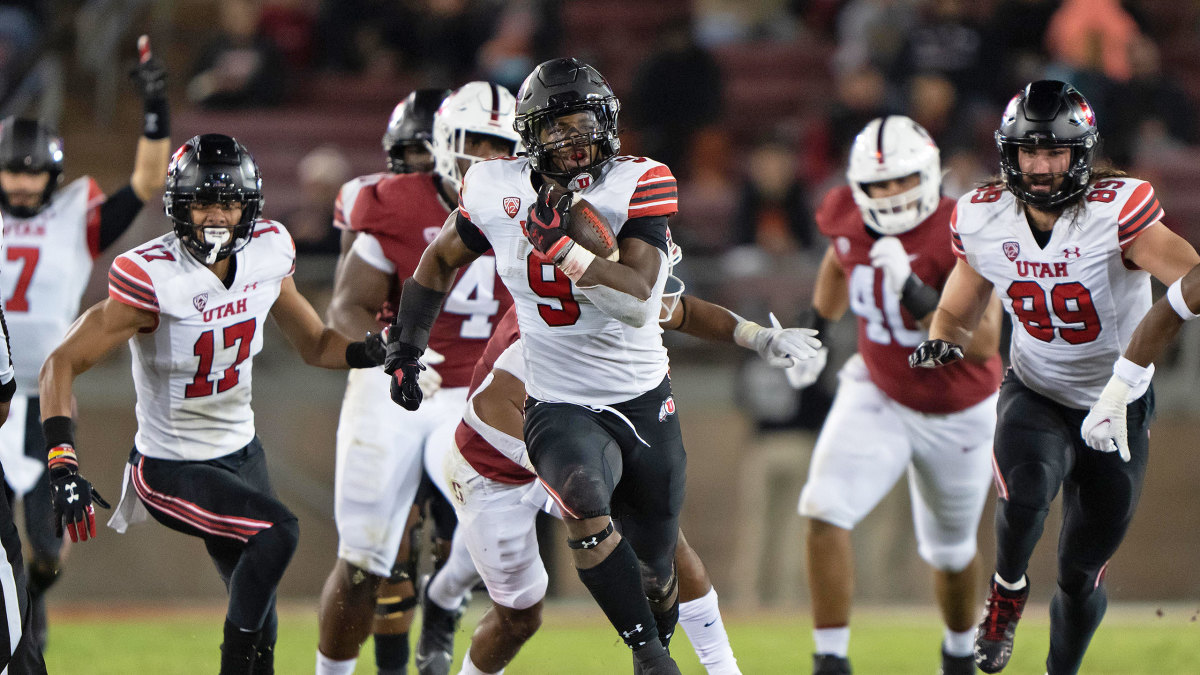How Utah Got Its Groove Back in Time to Play Pac-12 Spoiler

[Editor’s note: This story was published before Utah’s 38–7 victory over Oregon on Saturday.]
Oregon fancies itself the bully of the Pac-12, with former offensive lineman Mario Cristobal attempting to recruit an SEC team to the Pacific Northwest. But standing in the way of the Ducks achieving both a conference title and playoff berth are a couple of things.
One is Oregon State on rivalry weekend. But more pressingly is not just one, but probably two dates with the resurgent Utah Utes. The No. 3 Ducks will get them once in Salt Lake City on Saturday and could get them again in Las Vegas for the Pac-12 crown if both teams can win their divisions. Speaking of Vegas, the Ducks are three-point road underdogs against the Utes despite being No. 3 in the College Football Playoff rankings. There may just be something to Utah as a spoiler.

If you left the Utes for dead early in the season during their Week 5 bye after a 2–2 start with only one FBS win, it shouldn’t be held against you. Utah’s defense was decent, but its offense was pretty dreadful, scoring only 17 points in regulation against each of BYU, San Diego State and Washington State. Sophomore Cameron Rising took over at quarterback for Charlie Brewer, and since that bye week, the Utes have been difficult for basically every opponent to stop, going 5–1 in their last six games. The offensive line has been shaken up as the team tried to find a combo that worked. A position of strength coming into the season took a little bit to click, but now that is has, the Utes have not looked back.
Utah is not like the high-flying outfits that light up scoreboards in the Pac-12. Instead, it matriculates the ball down the field with slobberknocker football. Utah is fifth in the country in rushing plays of 10 or more yards and 98th in passing plays of 20 or more yards. This starts to make sense when you consider Utah is 81st in intended air yards (total air yards of passes thrown). This is not an offense that’s terribly interested in attacking with a vertical passing game. Instead, the Utes’ explosive plays come on the ground, and they are devastatingly efficient. Since their bye week, they’re second in offensive expected points added, and overall this season they’re 12th in success rate.
What they do generate in the passing game is largely due to their tight-end usage. Two of Utah’s top-three receivers are tight ends Brant Kuithe (No. 80) and Dalton Kincaid (No. 86), who have 36 and 24 catches, respectively. Neither is a classic in-line tight end—more of the hybrid variety—and both spend a healthy amount of time lined up in the slot or out wide (although “wide” in Utah’s offense is relative given that the Utes often line up in condensed formations).
Here, Kuithe lines up as a wideout and runs a route into open space, finds a void in Arizona State’s zone defense and settles down before bullying his way into the end zone for one of Utah’s 37 red-zone touchdowns (fourth nationally).
The tight ends also factor in Utah’s screen game. Here, Kincaid lines up wide as one of the perimeter blockers for a screen throw out to Kuithe that keeps the chains moving as a nice drive starter to open up the UCLA game.
They also affect the running game as blockers and runners. Whether it’s handing Kuithe the ball on an end around, which Utah uses to attack defenses horizontally as a changeup …
Or getting into perimeter blocks in the running game that showcase their athleticism. A plodding tight end isn’t exactly the type of player who’d be able to do this:
But where Utah is really unique is in its use of three-tight-end sets like this play, which turns into an explosive run for Tavion Thomas.
From this angle you can see all three tight ends, including Cole Fotheringham (No. 89), get to work to pave the way for Thomas. Fotheringham drives a poor USC corner seven yards down the field.
Three-tight-end sets are relatively rare for most college football teams, but it’s a consistent feature of Utah’s offense. The Utes lead the nation in three-tight-end formations, with 126 of their 594 plays featuring them (only two other teams have over 100 plays with three tight ends). When you add in Utah’s 255 snaps with two tight ends, the Utes line up with multiple tight ends 64.1% of the time. They’re not reinventing the wheel on offense, as they’re 95th nationally in shotgun usage, but they are creating matchup issues in a sport that has trended toward more hybrid defensive personnel to match spread offenses.
Oregon has not faced a rushing offense that brings what Utah does to the table, but over the next three weeks it may get Utah twice. The Ducks’ season will hinge on whether they really are the bully they hope to be.
More College Football Coverage:
• Coaching Carousel Notebook: What We're Hearing
• Who Can Overthrow the Usual Conference Champs?
• The Best Power 5 Coaches of 2021
